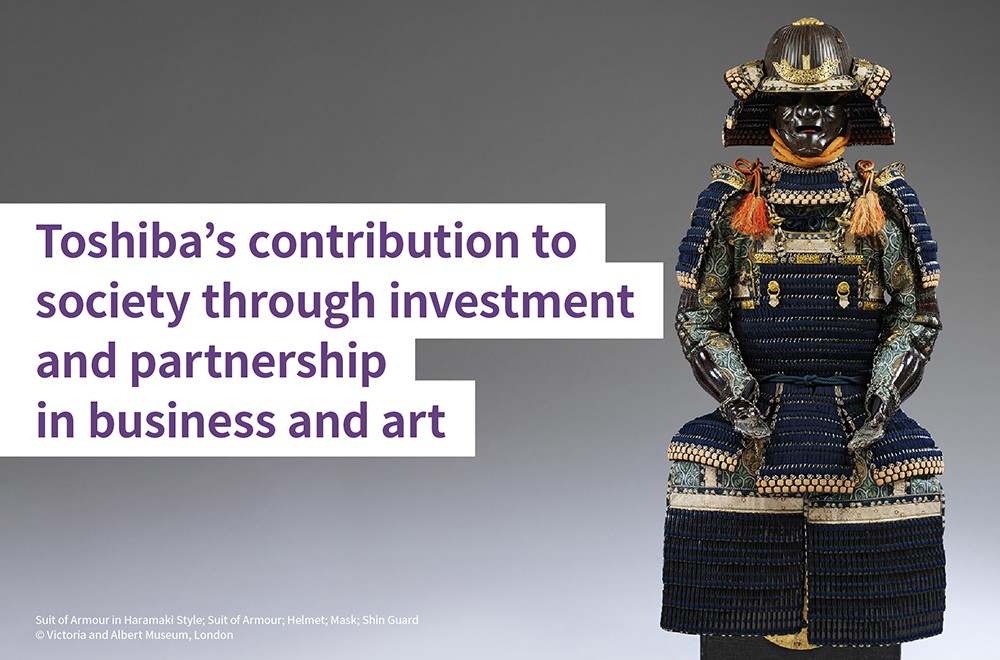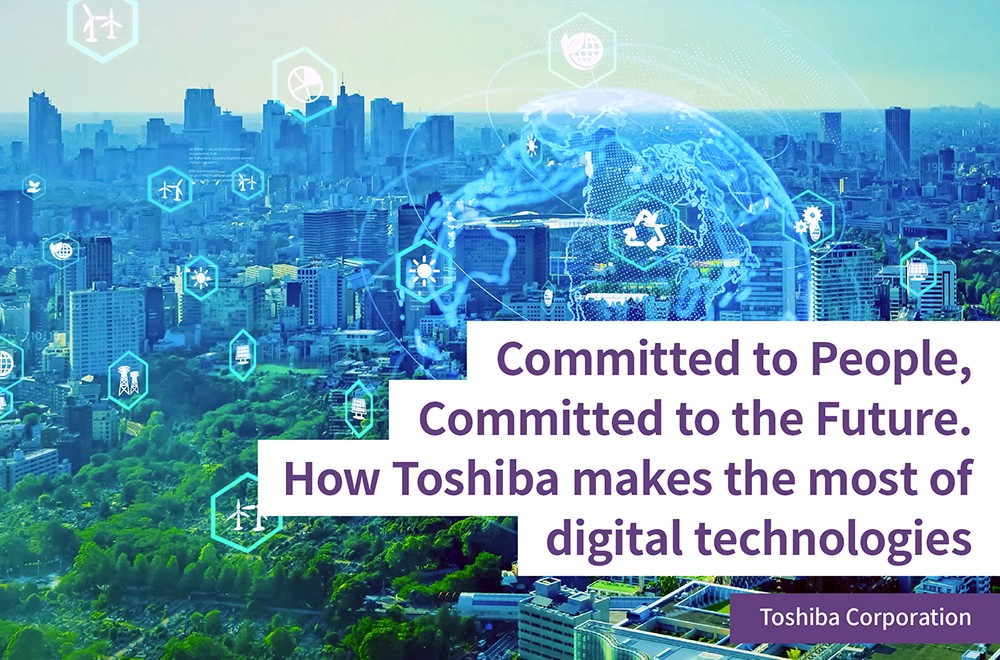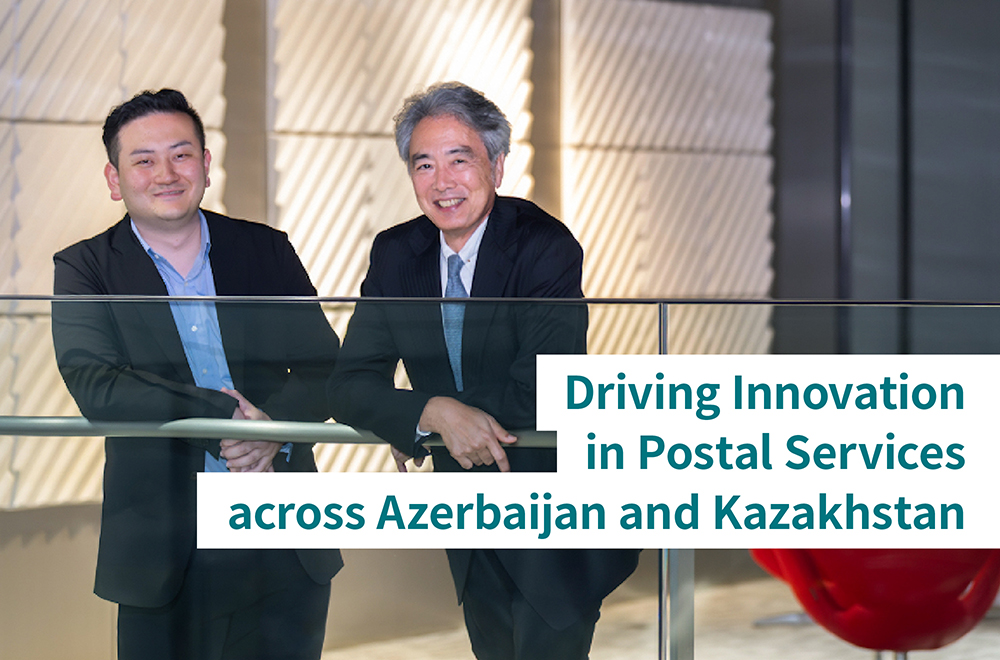When designing a business, first design the future through people- and planet-centered Service Design
2023/05/15 Toshiba Clip Team
- Service Design has entered the spotlight as a method well-suited to the rapid technological development and increasing uncertainty we face today.
- Toshiba is advancing a co-creation project to study design methods with Japanese and German university students.
- Products and services designed around people and the planet are what will create a sustainable future!
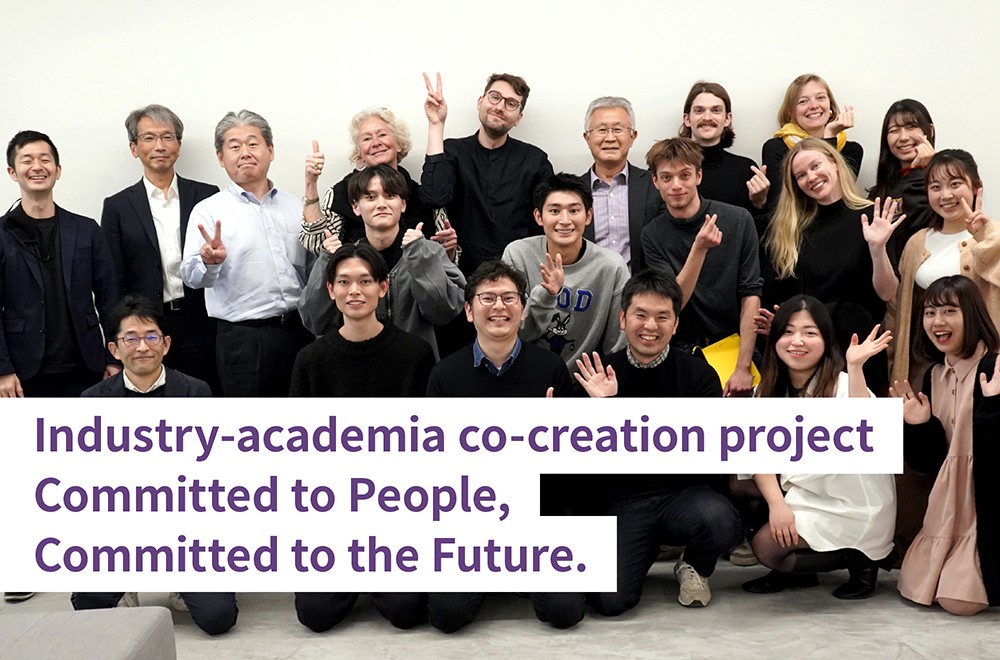
Today, technology is advancing at an exponential pace, and we face an increasingly complex social and business environment. In a world in which making products and services more sophisticated and multifunctional has become the rule rather than the exception, it is difficult to envision a sustainable future for people and the planet. Perhaps we should start by asking what issues should be solved by society’s chosen products and services. Or rather, what are the issues in the first place? First we must find the questions. A method called Service Design is drawing attention in this regard.
Service Design is the process by which companies and customers engage in comprehensive co-creation to create new value through products and services. One example of Service Design is the industry-academia joint project that Toshiba is embarking on with Chiba University and TH Köln (Cologne University of Applied Sciences). Keiji Ogata and Koji Ogawa, members of the Cyber-Physical Systems (CPS) x Design Division, the division that accelerates co-creation activities at Toshiba, are the driving force behind this project. Yuji Sakurai, who was stationed in Germany at TOSHIBA EUROPE GmbH (at the time of the interview), also supported the project from his position in overseas logistics automation solution sales. Through this project, Toshiba has gained young people’s uninhibited ideas and viewpoints from which to envision the future.
What we need right now is Service Design based on co-creation
Manufacturers have long emphasized the importance of design in making their products more sophisticated and streamlined. Naturally, consideration must be paid not only to the design and user interface, but also to the user experience. Design Thinking and Systems Thinking were the first methods to emerge as problem-solving methods for our increasingly diverse society. In recent years, Service Design has entered the spotlight.
As designers at Toshiba, Ogata and Ogawa have been intimately involved in Service Design. Yet, when asked to define Service Design, Ogata replies, “Even an international academic authority may struggle to give a clear answer to that question.”
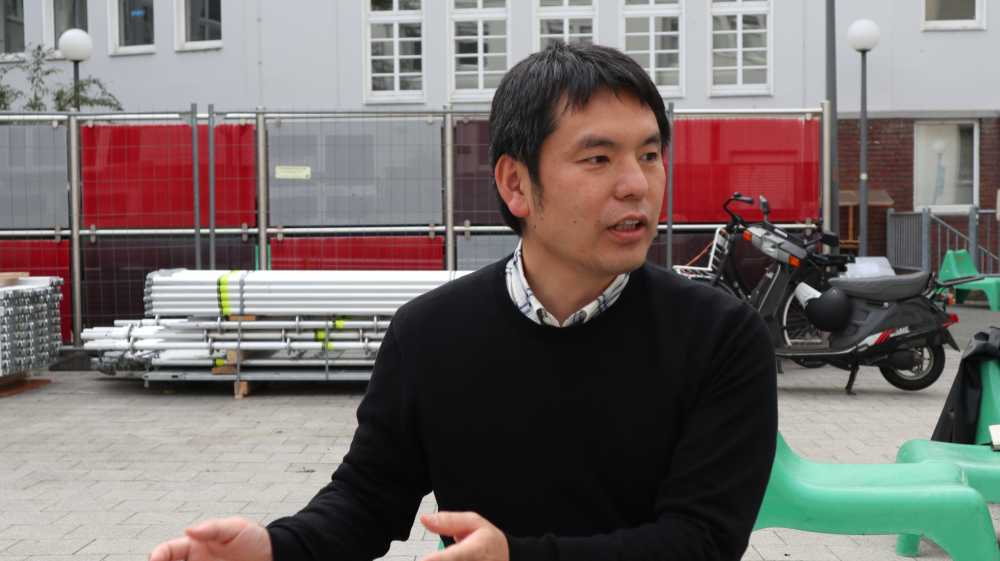
Keiji Ogata, Expert, Co-Creation Promotion Group, Design Development Department,
CPS x Design Division, Toshiba Corporation
“Service Design becomes even more difficult to understand when we look at it in terms of how it differs from other methods. It can’t be clearly defined that way. Service Design is more comprehensive and takes an interdisciplinary approach at the practical level. In other words, we consider all available methods, including diverse knowledge from any academic field—such as design thinking and ergonomics—to contribute to delivering the best possible products and services. That’s what Service Design is about.”
In order to create products and services that function well and satisfy users, companies cannot simply create what they want and hope that users will use them. They must develop their products and services with an emphasis on the user’s perspective. With this philosophy as its starting point, Service Design is being explored and practiced in depth across all industries, not only in the manufacturing industry. The desire for broader co-creation is what fuels this trend.
Ogata explains, “At Toshiba, we have created a place for this, Toshiba co-creation center called Creative Circuit, where we are developing methods for co-creation. Things like business development and digital transformation (DX) require collaboration among people from various fields and departments. Since Service Design leverages knowledge from a wide range of disciplines, including design thinking and systems thinking, its methods are diverse. That’s why it not only accelerates co-creation, but is also easy to apply in a variety of situations.”
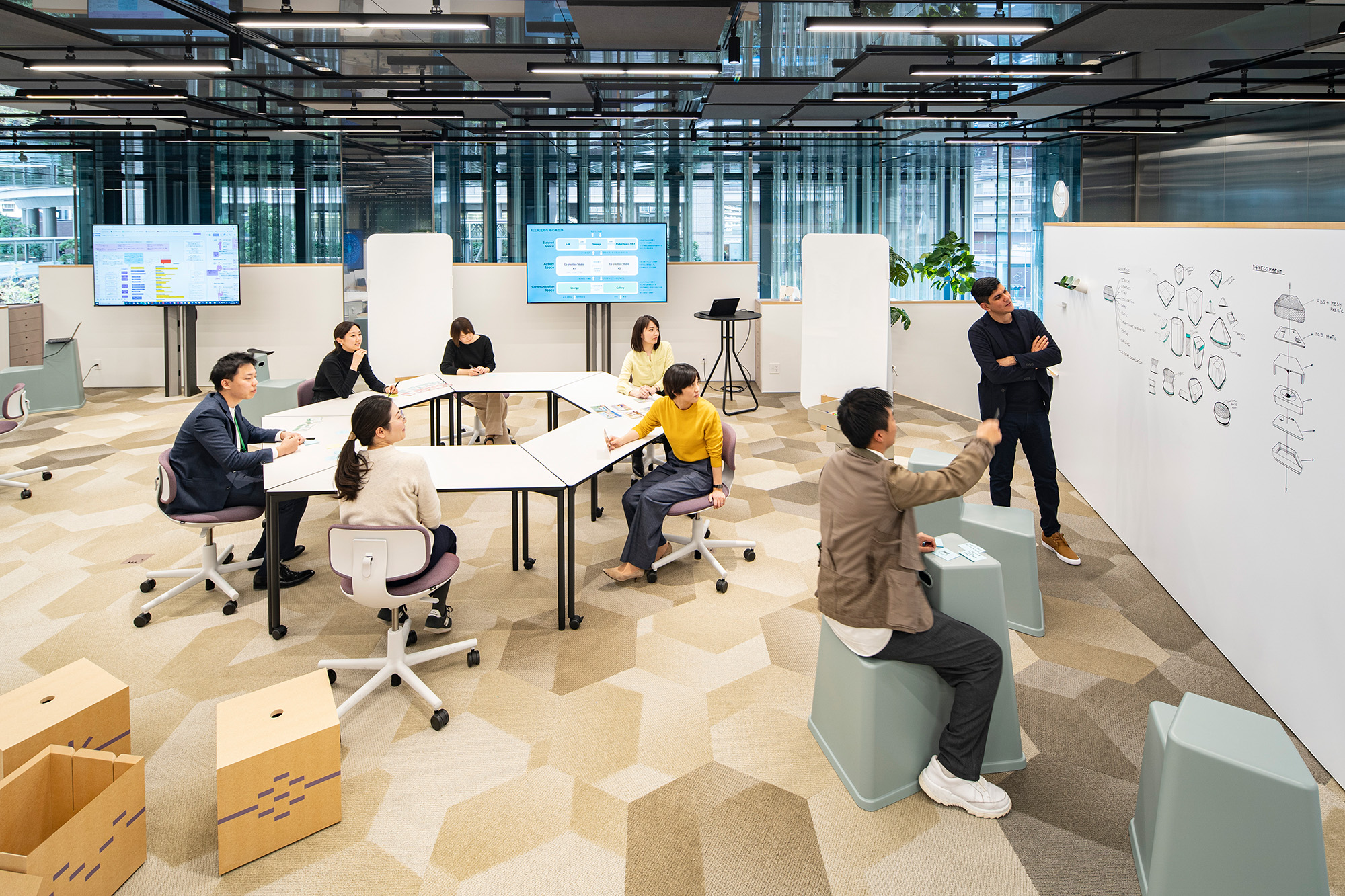
Toshiba co-creation center, Creative Circuit
Envisioning the “logistics of the future” through co-creation with German and Japanese university students
We have seen that Service Design is an important method for envisioning the future of manufacturing and a more sustainable society. Service Design is also a concept that feels accessible to anyone who lives and works in society.
“It’s not just about product design. We need to think about designing the entire service, including customer service, while making improvements. To do so, all parties involved, not just the designers, must share the same basic philosophy of Service Design and approach the project with shared sensibilities. To draw an analogy, it means all parties need to get a ‘feel for the place’ and have an intuitive understanding of what Service Design is,” says Ogata.
This idea has led Toshiba to conduct a joint industry-academia research project with Chiba University and Köln International School of Design (KISD), an institute of TH Köln in Germany. This joint study on Service Design has been ongoing since 2017.
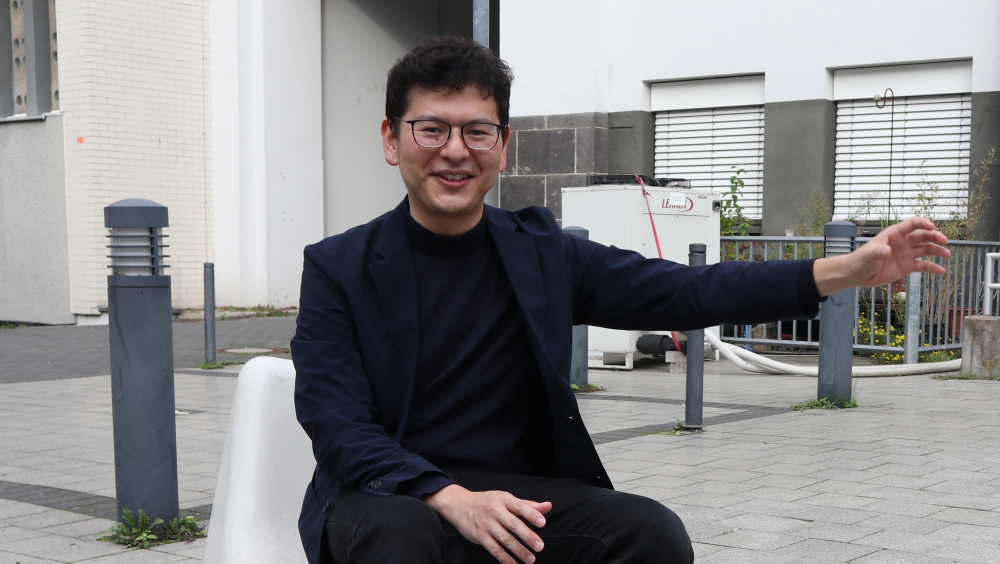
Koji Ogawa, Co-Creation Promotion Group, Design Development Department,
CPS x Design Division, Toshiba Corporation
“The purpose of the joint study is three-fold. First, we want to absorb the knowledge at KISD and Chiba University to develop a design methodology that can be applied in the business world. Professor Birgit Mager, the first person in the world to receive a degree in Service Design, teaches at KISD. Chiba University, meanwhile, has a long track record in research on Service Design. Second, we want to learn new approaches that will help Toshiba create value with its customers across the globe. And third, we want to support students and contribute to the development of future leaders,” says Ogawa.

About Professor Birgit Mager
Thanks to the efforts of designers Ogata and Ogawa, with support from specialist Sakurai stationed in Germany, collaboration is proceeding smoothly with KISD and Chiba University. Their focus is on “creating a method for future insights,” more specifically themed on “the future of logistics/postal services.” As a specialist whose experience fit the theme, Sakurai was singled out for participation in the project.
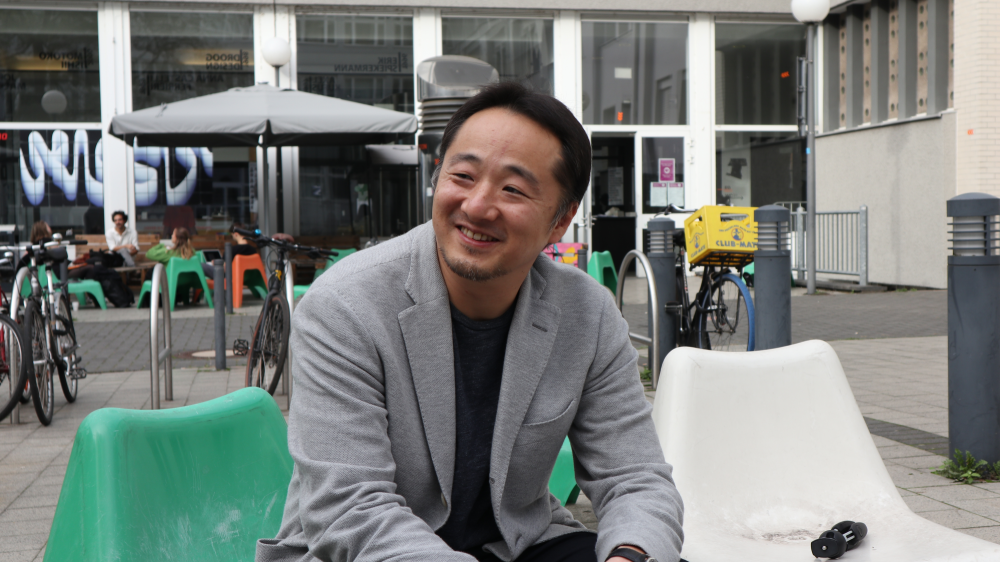
Yuji Sakurai, Specialist, TOSHIBA EUROPE GmbH *Position at the time of the interview
“The COVID-19 pandemic caused e-commerce shipments to rise worldwide. In logistics centers, this manifested as an increasing need for automation in the sorting of packages. The current emphasis in the industry is on sustainability concerns. Logistics companies, in particular, are being forced to consider how sustainable their practices are for people and the planet. Many companies are working on this issue and various startups have been created. These concerns are particularly strong in European logistics and postal industries. We hoped that the perspectives of German and Japanese students would provide stimulating insights into the future,” says Sakurai.
Students visited a logistics exhibition held in Europe and interviewed companies to understand the situation at the forefront of the industry. They then participated in a workshop to analyze and summarize the future of logistics/postal services as “future insights.” Through information gathering, the students expanded their ideas in a divergent manner and then converged to form a vision. Activities such as these can trigger innovation and are the backbone of Customer Value Design, Toshiba’s version of Service Design methodology that shares similarities with Design Thinking.
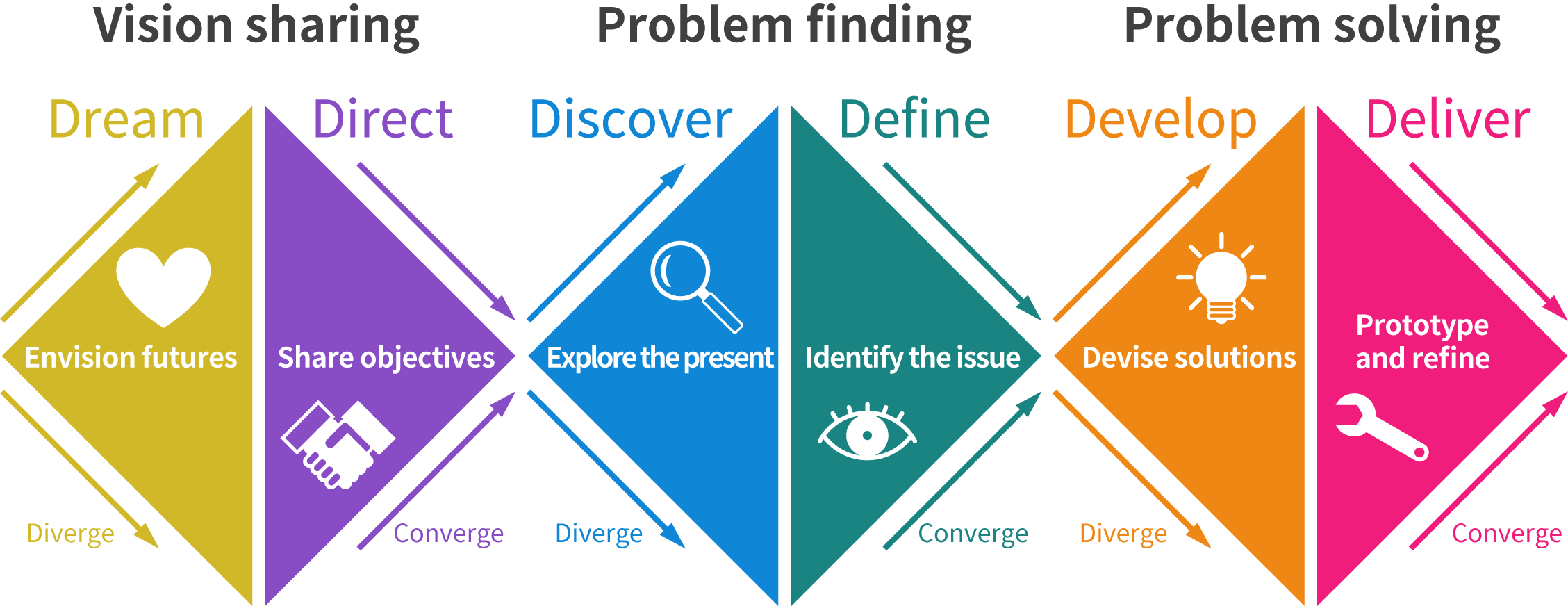
Customer Value Design process (the process used by the project for vision sharing)
Sakurai continues, “As a business entity, we are always thinking at the forefront of logistics. Quite inevitably, we imagine a future with a high level of automation and improved convenience. However, the students’ ideas easily bypass such assumptions. For example, I was mind blown by the way the students landed on the topic of, ‘if for some reason the world were devastated, and people were divided, what means would be available to connect communities and distribute goods despite the disruption in infrastructure?’
This perspective and thought development is something we as adults no longer have. Expanding our imagination, how will Toshiba’s technologies be utilized in the near future? We must continue to think about all options, without ruling any out.”
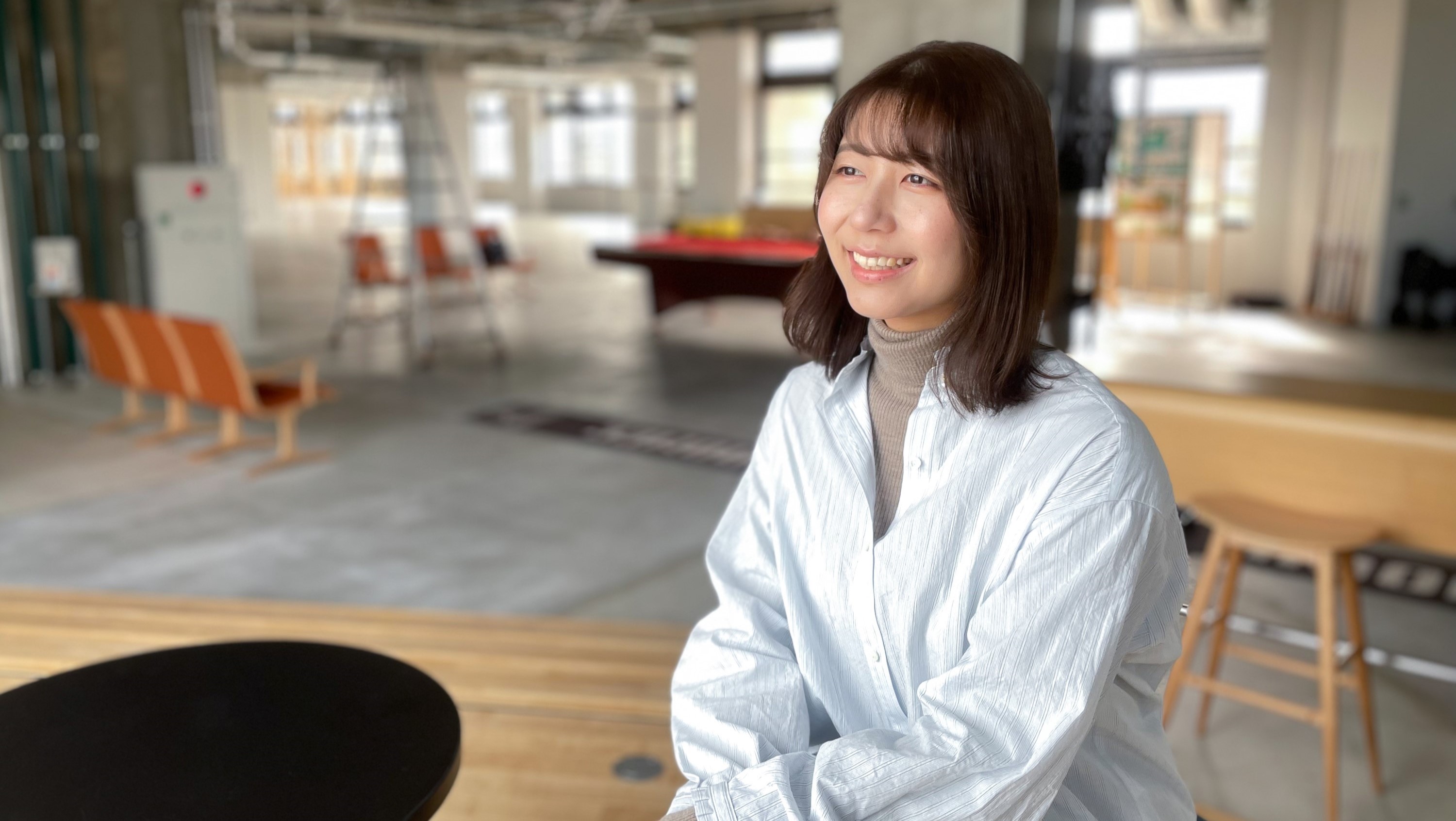
Mihoko Tanaka, Graduate School of Science and Engineering, Chiba University
Workshop participant Tanaka says, “I learned a great deal from the values expressed by people from different countries and the fast pace at which the workshop proceeded. By looking at the major theme of logistics/postal services from a variety of value systems, then quickly repeating the process of divergence and convergence in discussions about our desired future, I was able to envision the future from new perspectives that I had never had before.”
Designing for the future of people and the planet
Designers Ogata and Ogawa look back on the co-creation project with Japanese and German university students with a sense of excitement. Summing up the insights they gained from their interactions with the young visionaries, they reflect on the future of Service Design:
“About half of the students at KISD are vegetarian, and the cafeteria always serves vegetarian meals. Some students also said it was ‘cool’ to incorporate their grandparents’ clothes into their outfits. On the other hand, they were strongly against ‘greenwashing,’ which is when organizations market themselves as more sustainable than they actually are. It was a great learning experience for me to see how thinking about sustainability and practicing it came as naturally as breathing to the students,” says Ogawa.
Ogata, on the other hand, says, “I made some great discoveries about design methodology. The students were digital natives and had different boundaries on privacy than I did. For example, they would look at a friend’s location and say, ‘He’s here right now, let’s ask him what he thinks.’ As this generation becomes the mainstream of society, products and services must also be designed around them to stay in line with the times.”
Sakurai, who participated in the project from the business side, notes that his exposure to Service Design provided him with a new outlook on key business perspectives and ideas such as the SDGs and diversity.
“Students from Japan and Germany visited me at the postal systems exhibition in Frankfurt, at which Toshiba was an exhibitor. There, they asked me to choose the words I thought were the most important from a handful of cards written with various words. After much thought, I chose ‘Environment’ and ‘Accessibility’ as my top priorities, followed by ‘Technological Innovation’ as my last choice.
Toshiba operates as an advanced technology company. However, if we are to create value focused on people and the planet, it may not be necessary for us to think in terms of technology first. We can’t help but focus on the technology and products, but how we think about the future we are creating for people and the planet—that premise is more important in Service Design, and technology development should come after that,” says Sakurai.
Thinking and designing from a planet-centered perspective. This approach is not far off from Toshiba’s management philosophy, “Committed to People, Committed to the Future.” Facing the turbulent state of society today, we are moving forward and implementing new values that will be required tomorrow. These values hold the key to the future of the products and services that manufacturing companies are creating in earnest.
![]()





